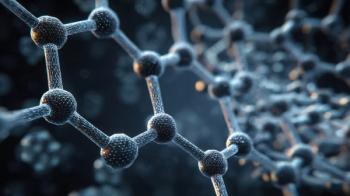
RP-HPLC to Compare Genotoxic Impurities in Extracted and Synthetic Nicotine
A recent study examined the impurity profile of thirteen different lots of synthetic nicotine and compared them to fourteen lots of nicotine extracted from plants using in-house analytical methods, with samples tested for alkaloids and phenols with reversed-phase high-performance liquid chromatography (RP-HPLC).
A joint study between JSTAR Research Inc. (Cranbury, New Jersey) and Porton Pharma Solutions (Chongqing, China) set out to identify impurities in synthetic nicotine and extracted nicotine, as well as justify the claims made by synthetic nicotine manufacturers that their product is easily and affordably produced, as well as generated without the genotoxic impurities that form during the extraction process of nicotine. Samples were tested for alkaloids and phenols with reversed-phase high-performance liquid chromatography (RP-HPLC). An article reporting the findings was recently published in Frontiers in Chemistry (1).
A nitrogen-containing organic compound that occurs naturally in many plant varieties and is the key component in tobacco plants, nicotine is extracted from tobacco plants and used as the key ingredient in many smoking products, such as cigarettes, cigars, smokeless tobacco, hookah tobacco, and most e-cigarettes (2,3). Another method to generate nicotine is chemical synthesis. Due to the minimal regulations imposed by the U.S. Food and Drug Administration (FDA) on synthetic nicotine compared to tobacco plant-derived nicotine, the former has gained the interest of many tobacco product manufacturers over the last few decades (1).
Thirteen lots of synthetic nicotine from Porton Pharma Solutions in-house was taken and fourteen different extracted nicotine from local vendors in China were used. Analysis of impurities present in the samples was conducted using HPLC, and liquid chromatography-mass spectrometry coupled with multiple reaction monitoring (LC-MS-MRM), which was used for qualitative and quantitative analysis of nitrosamines (chemical compounds formed when nitrites, which can be formed from nitrates, react with a secondary or tertiary amine [4]).
The researchers concluded that the nicotine from in-house synthetic nicotine lots was identical to extracted nicotine in terms of assay and enantiomeric purity. The overall impurity content in synthetic nicotine was low compared to extracted nicotine, with few exceptions. The key advantage of synthetic nicotine is that the tobacco leaves harvest does not depend on weather conditions and saves the land for other important vegetation cultivation. Furthermore, extracted nicotine products are often overloaded with flavor to mitigate any smell or rustic flavor incorporated during harvesting (hay-like odor, bitter, and astringent taste). Synthetic nicotine does not require such flavoring due to the controlled nature of synthesis in a laboratory (1). The researchers believe that it is important to note that the health risks of tobacco use extend beyond the impurities and tobacco-specific nitrosamines quantified in this work, and tobacco smoke contains numerous other harmful substances that contribute to various diseases, including respiratory and cardiovascular conditions. As a result, the best approach to minimize health risks associated with tobacco is to avoid Tobacco either extraction or synthesis approach (1).
One of the main limitations of this study is the availability of various synthetic and external nicotine types due to regulatory concerns. A statistical analysis could have been carried out if more lots were available. Future work includes improving the efficiency of the methods such as developing a single high-resolution-mass spectrometry (HRMS) method to identify and quantify both alkaloid impurities and nicotine nitrosamine rather than using both HPLC and LC-MS (1).
References
1. Nisathar, A.; Chen, H.; Lei, X.; Zeng, Z.; Chen, J. Comparison of Genotoxic Impurities in Extracted Nicotine vs. Synthetic Nicotine. Front. Chem. 2024, 12,1483868. DOI:
2. Henningfield, J. E.; London, E. D.; Pogun, S. Handbook of Experimental Pharmacology, Nicotine Psychopharmacology. Springer, 2009.
3. Robinson, J. H.; Pritchard, W. S. The Role of Nicotine in Tobacco Use. Psychopharmacology (Berl) 1992, 108, 397-407. DOI:
4. Nitrosamines definition. National Library of Medicine website.
Newsletter
Join the global community of analytical scientists who trust LCGC for insights on the latest techniques, trends, and expert solutions in chromatography.




